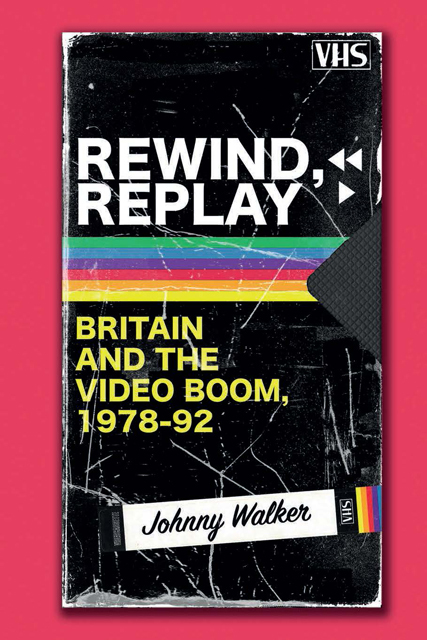Book contents
- Frontmatter
- Contents
- List of Figures
- Acknowledgements
- Introduction: Rewind, Replay
- 1 We’ve Got It Taped
- 2 Shrugging Off the Recession
- 3 Threats and Benefits
- 4 Regulation and Adaptation
- 5 Independent Spirit vs Corporate Muscle
- Conclusion: Video Legacies
- Select Bibliography
- Select Film/TV/Videography
- Select Periodicals
- Index
1 - We’ve Got It Taped
Published online by Cambridge University Press: 18 November 2022
- Frontmatter
- Contents
- List of Figures
- Acknowledgements
- Introduction: Rewind, Replay
- 1 We’ve Got It Taped
- 2 Shrugging Off the Recession
- 3 Threats and Benefits
- 4 Regulation and Adaptation
- 5 Independent Spirit vs Corporate Muscle
- Conclusion: Video Legacies
- Select Bibliography
- Select Film/TV/Videography
- Select Periodicals
- Index
Summary
The story of the British video boom begins in earnest in 1978, when the first distributors of pre-recorded video entertainment emerged, selling their wares via mail order at first, and then through many thousands of shops and membership clubs throughout the country in the years that followed. The next chapter considers the rise of video shops and clubs and how the proprietors of such navigated video's explosion in popularity. The present chapter is concerned with the early history of the distributors that supplied them and the product they offered.
The months spanning late 1978 to mid-1982 constitute the ‘gold rush’ phase of the British video business. As industry commentator Graham Wade explained in 1985, the numbers of homeowners with a videocassette recorder ‘rocketed from virtually zero to about 50%’ during this period. In 1979, around 165,000 machines were imported to Britain for domestic use. By the end of 1981 the figure had risen to 1 million. Six months into 1982, it was clear to industry analysts that the popularity of video in the UK far exceeded that of the US, surpassed only by Japan. The trade paper Variety put it in the simplest of terms: ‘The UK has become the strongest and fastest growing market in the world.’
Britons’ interest in home video led to the establishment of upwards of eighty pre-recorded videocassette distributors, covering the breadth of entertainment, from DIY programmes to music shows to travelogues to magazine-style programmes to pornography to cartoons to feature films. Companies included a plethora of independent outfits, as well as subsidiaries of major American and British film and communications companies. The present chapter considers the rise of these companies, and the strategies they adopted when attempting to communicate the excitement of video to the medium's new consumers.
The chapter begins by assessing the backgrounds of the earliest distributors and how their past experiences in adjacent industries fed into the founding of the nascent market for pre-recorded videocassettes. In the beginning it was not clear what uses video would have: what did the video-viewing public want to see? Did they want learn things from video? Did they hope to be entertained? Within a short period of time, it would become clear that entertainment, and specifically that offered by feature films, was to be the industry's primary driver.
- Type
- Chapter
- Information
- Rewind, ReplayBritain and the Video Boom, 1978-1992, pp. 17 - 61Publisher: Edinburgh University PressPrint publication year: 2022



